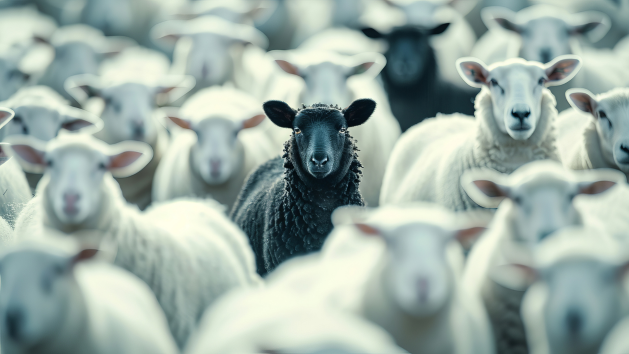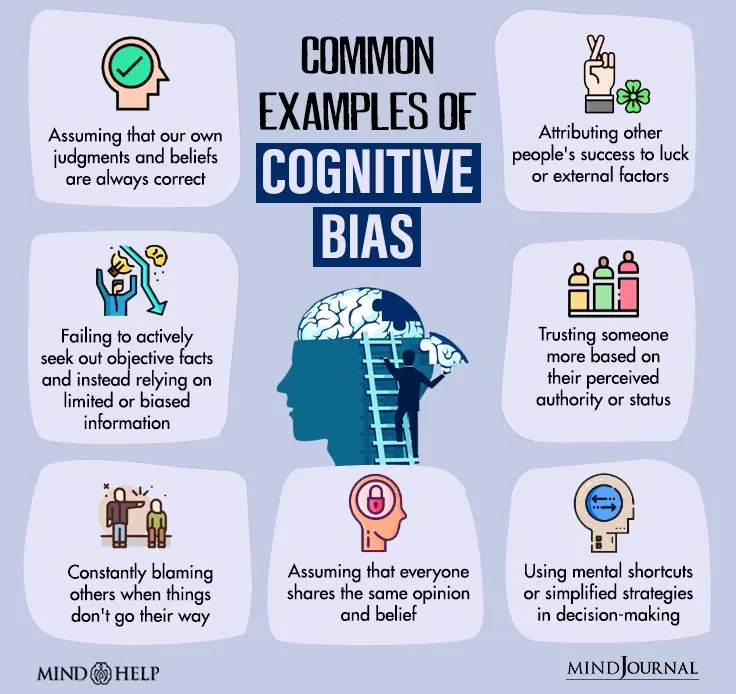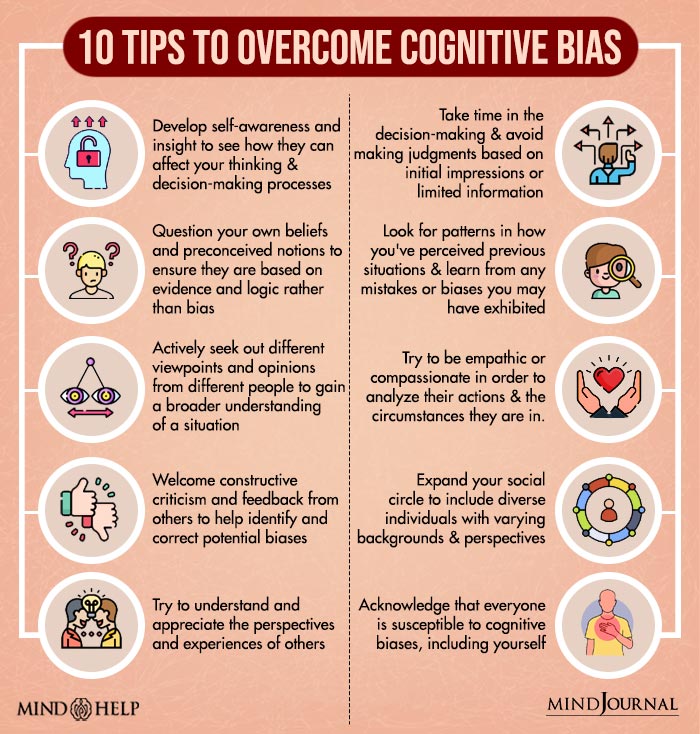
Cognitive biases in children

From September 2024, teachers in the French national education system will be required to roll out the teaching of psychosocial skills and integrate empathy courses into their practice. The aim? To combat bullying at school, by equipping students with the knowledge and skills to understand their emotions and the way their Brain works. At the top of the list of knowledge to acquire in order to develop good critical thinking skills are the famous cognitive biases, those natural shortcuts our Brain sometimes takes to function more quickly! What are these biases? How can we become aware of them? Babaoo gives you the lowdown! ⬇️
What is a cognitive bias?
A cognitive bias is a systematic distortion in the way our Brain processes and interprets information. These mental shortcuts are natural mechanisms that enable us to make quick decisions without having to analyze every detail of our environment. Although useful, these biases can also lead to errors (judgment, misinterpretations of reality, etc).
The non-pathological nature of cognitive biases in children
Cognitive biases are not defects or diseases of the mind. They are aspects of the normal functioning of a human Brain, for young and old alike. The Brain is designed to function economically: it uses as few resources as possible to process a lot of information every day.
The 4 categories of cognitive bias
Becoming aware of these cognitive biases is the first step in learning how to manage them. The aim is not to eliminate them (which is impossible and undesirable), but to recognize their presence. In this way, children learn to identify and question them.
The aim? To make informed decisions and develop critical thinking skills. Anais Roux, in her book Neurosapiens, helps us identify 4 categories of cognitive bias in children:
-
Emergency-related biases
In the event of danger, the brain prefers a rapid response to in-depth analysis. This bias is crucial to survival, as it enables us to react instantly to a threat.
-
Biases linked to information overload
When overwhelmed by too much information, the brain selects what seems most relevant. This bias helps us to focus on the essentials and avoid analysis paralysis.
-
Biases linked to memory management
To avoid overloading the memory with insignificant details, the child’s Brain uses shortcuts to remember the essentials. This bias makes it possible to store and retrieve information more efficiently.
-
Consistency and meaning bias
The Brain tends to look for patterns and meanings even where none exist. This bias helps to make sense of an environment, but can also lead to wrong conclusions, mistakes, or to looking for “someone to blame”, for example.
The different cognitive biases in children
By understanding these biases, we can analyze how our perception of reality is influenced, and learn to recognize distortions. There are a number of biases that can be described in children – and adults! Here’s a list.
Illusory Correlation Bias
- What is it? Illusory Correlation Bias arises when we perceive a relationship between two events or variables that either does not exist or is exaggerated.
- Example: some children refrain from doing an activity on the evening of a full moon, thinking that there are more accidents on those evenings.
Authority bias
- What is it? Authority bias is the tendency to attribute excessive credibility to authority figures, regardless of the veracity of their assertions.
- Example : clothes don’t make the man! A child may place blind trust in a doctor in a white coat or a policeman in uniform, believing that everything they say is true, even if they may sometimes be mistaken.
Negativity bias
- What is it? Negativity bias is the tendency to remember negative experiences more easily than positive ones.
- Example: a child might have the impression that trains are always late, because he remembers more about trains that arrive late than about those that arrive on time. This might be because those around him relate more often when a train arrives late, and don’t mention anything in particular when the train arrives on time.
Optimism bias
- What is it? Optimism bias is the tendency to attach more importance to good news than to bad, which can lead to an overly positive view of reality.
- Example : a child has just spent 2 weeks on vacation in the sun and ignores a storm warning on August 15. He doesn’t take his raincoat to go out that day, thinking that the good weather will continue, even though the weather forecast says otherwise.
Conformity bias
- What is it? Conformity bias is the tendency to follow the group’s opinion or behavior, often to the detriment of one’s own judgment.
- Example : during a collective mental arithmetic exercise on a slate in class, a pupil changes his answer (although correct) when the results are pooled to conform to that of his classmates, believing that the others are right.
Intentionality bias
- What is it? Intentionality bias is the tendency to attribute an intention behind events or actions, even when there is none.
- Example : a child loses his grandfather suddenly. He thinks that someone must have been responsible for his death, even if the cause was unforeseeable or unavoidable.
Hostile attribution bias
- What is it? This bias consists in perceiving hostility in the behavior of others, even when there are no clues to suggest it. This bias can lead to conflict, as the child reacts defensively or aggressively to situations wrongly perceived as hostile.
- Example: a child accidentally steps on his classmate’s foot, who interprets this as a deliberate act of malice.
Confirmation bias
- What is it? Confirmation bias is the tendency to pay attention to and seek out information that confirms our pre-existing beliefs, while ignoring information that contradicts them.
- Examples:
- A child only pays attention to the faults of a classmate he dislikes, without noticing his qualities.
- A teenager only pays attention to information in favor of something he asks his parents to do in order to convince them, without paying attention to arguments against it.
- A child asks his parents to play a certain video game, arguing “everyone in my class is allowed to!” when in fact he’s referring to 2 or 3 students.

Source: Mind Help
However, it would be a mistake to try and get rid of these biases… In fact, biases reflect the natural functioning of the brain, but are not a pathology. The point is not to get rid of them, but to become aware of them, so as to reason critically, usefully and fairly!
To do this, it’s necessary to focus on reasoning rather than opinions. The more we attach ourselves to an idea, the less we detach ourselves from our biases, and the less likely we are to reason critically.
Learn to master your biases
Cognitive biases, while inevitable, can be managed in different ways.
- Accept your stereotypes: acknowledge that everyone has stereotypes without feeling guilty. This opens the way to intelligent discussions on prejudice.
- Questioning the origin of one’s opinions: encourage reflection on the origin of one’s opinions and be wary of arguments from authority. Just because someone in a position of authority says something doesn’t necessarily mean it’s true. What’s more, at a time when the Internet relays everyone’s opinions on everything, it’s useful to convey to children that it’s not necessary to have an opinion on every subject.
- Educate yourself: continually stimulate your mind by acquiring new knowledge to reclassify stereotyped information.
- Doubt: learn to doubt your certainties. Acknowledging that others may be wrong doesn’t mean you’re right, and vice versa.
- Maintain your motivation: keep your Brain active by taking on intellectual challenges to stimulate the Slow Brain.
- Beware of first impressions: don’t rely solely on first impressions. Deepen your understanding before drawing conclusions.
- Preserve your physical resources: maintain a good physical condition to keep your cognitive abilities at their peak. Fatigue and hunger can impair our judgment.
- Lighten your mental load: when performing important tasks, focus on the essentials and put aside peripheral concerns.
- Manage your emotions: learn to recognize, understand and manage your emotions. This helps us to better understand the emotions of others, and thus to maintain relationships based on empathy.
- Take your time: avoid rushing into decisions. Take time to reflect, to consider all the criteria and to consult outside advice if necessary.
Teaching this methodology helps shape more critical and open-minded children, fostering a more informed and respectful decision-making environment, for a better way of living together.

The Babaoo Recap
Cognitive biases are not defects to be eradicated, but natural mechanisms of the Brain. The key lies in being aware of their existence and their influence on the thoughts and actions of our children (but also of us adults!).
Integrating these concepts into education gives children the tools to develop critical thinking and empathy. And prepare them to make more informed decisions, and interact more respectfully and harmoniously with others.
Understanding and managing cognitive biases contributes to better living together, and fosters a more inclusive and caring school and social environment.
➡️ Read also: Becoming an adult aware of others.
You may also be interested in these articles



